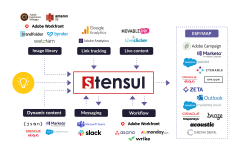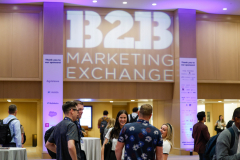The 9 Most Memorable Super Bowl Ads… & What Marketers Can Learn From Them
- Written by Kelly Lindenau
- Published in Blog
For 42% of viewers, the primary reason they tune into the Super Bowl is to watch the advertisements. With companies competing for coveted 30 seconds ad slots at about $6.5 million a pop, the competition’s always on to see who produces the best commercials — and the worst.
With the stage set for the 2022 battle of the marketing brains, let’s look back at the most memorable Super Bowl commercials of all time and examine what went right and, more importantly, what went wrong.
1. “The Force” (2011)
In what might be one of cutest advertisements of all time, Volkswagen checked all the boxes of advertising: Conveying a clear message, a strong call to action, emphasizing its brand and creating an eye-catchingly sweet asset.
Lesson learned: Laughter is good for people — and infusing humor with nostalgia further promotes positive brand reception.
2. “Puppy Love” (2014)
What’s better than puppies and beer? Not much, which is exactly why Budweiser told the story of a Golden Retriever puppy up for adoption and a Clydesdale befriending each other. This commercial was stuffed with nothing but sheer cuteness and in no way related to a beer, but viewers loved it.
Lesson learned: Once you achieve a high level of brand recognition, you can start transitioning from awareness generating campaigns to promoting brand identification and long-term loyalty.
3. “Joust” (2019)
“Game of Thrones” (GOT) and “dilly dilly!” mania was at a fever pitch in 2019, so Bud Light teamed up with HBO to integrate its “Bud Knight” into the hit show, GOT. The resulting mash-up generated a resurgence of interest in both pop culture phenomena.
Lesson learned: Pop culture references in marketing campaigns help create the approachability and relatability needed to remain relevant. It also makes it difficult for people to ignore ads that include topics they are interested in.
4. “Smart Meets Sexy” (2013) NSFW
Lesson learned: While it’s always a good idea to push the limits of content and branding to stand out, going too far out and creating comfortability has the opposite effect.
5. Betty White for Snickers (2010)
Two icons — Betty White and chocolate — come together to play in an early take on Snickers’ “you’re not you when you’re hungry” campaign. As viewers watched as America’s grandma was tackled into the mud during a pick-up football game, they were quickly relieved when Betty ate a Snickers and “reverted” to a younger male form.
Lesson learned: Shocking content in an advertisement significantly increases attention, benefits memory and positively influences behavior.
6. “I Died From An Accident” (2015)
And here’s a case of “shock value gone wrong.” Nationwide played into one of the most overplayed tropes: They were dead the whole time. And I don’t mean in an iconic “I see dead people way”; I mean completely missing the mark and leaving the audience stunned. As a young boy walks viewers through all the things he can’t do, it’s revealed that he died an accidental death. While it served its purpose to stand out in a sea of humor, the sudden morbidity left viewers with whiplash after the classic bait-and-switch.
Lesson learned: While shock value advertising has its benefits, it can quickly do more harm than good if the content disturbs or offends the audience.
7. “Alexa Loses Her Voice” (2018)
Alexa’s (literally) a household name, but Amazon still pulled out all the star-studded stops to compare Alexa’s capabilities to a human. From Cardi B to Sir Anthony Hopkins, Amazon recruited a panel of celebrities to touch just about every generation that was tuned in — and emphasized its point that Alexa can’t be replaced.
Lesson learned: Comparative marketing never fails, as it juxtapositions what could be with what is to enhance a product or service’s perceived value. A dash of influencer marketing to hit all generations doesn’t hurt, either.
8. “The Man Your Man Could Smell Like” (2010)
Old Spice found itself branded as an old-man product — and to change that perception, it wanted to appeal to Millennial viewers and women, who likely bought body care products for their men. And here’s the caveat: Despite being one of the most talked about advertisements, this didn’t air during the Super Bowl itself; it was just released over Super Bowl weekend.
Lesson learned: Rebranding helps reach a new target audience to generate more awareness of your company and product and generate a loyal customer base.
9. “Doritos Time Machine” (2013)
There’s user-generated content, and then there’s user-generated content. Doritos tapped into its customers’ voices and opened a contest to submit ideas for its Super Bowl commercial. The winning entry featured a “time machine,” a bag of Doritos, a young kid and an older man… and it was comedy perfection.
Lesson learned: User-generated content helps bring customers into the board room and gives them the opportunity to be heard and highlighted by the brand. It also doesn’t hurt that messaging resonates stronger with prospects when they’re delivered by their peers.
Related items
-
 Stensul Marketing Creation Platform Seeks To Streamline Asset Collaboration & Creation
Stensul Marketing Creation Platform Seeks To Streamline Asset Collaboration & Creation
-
 Programmatic Advertising Tricks For B2B Marketers
Programmatic Advertising Tricks For B2B Marketers
-
 #B2BMX Day 3 Recap: Unraveling The Marketer’s Paradox To Enter The B2B Content Renaissance
#B2BMX Day 3 Recap: Unraveling The Marketer’s Paradox To Enter The B2B Content Renaissance
-
 Audyence Launches Real-Time Demand Platform To Refine Demand Generation
Audyence Launches Real-Time Demand Platform To Refine Demand Generation
-
 BlueWhale Research Launches Digital Programmatic Display & Social Audience Solution
BlueWhale Research Launches Digital Programmatic Display & Social Audience Solution




